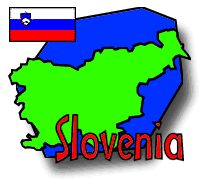Person of the Day: rebuilders of Metelkova Mesto
- RETINA
- Metelkova 6
- 1000 Ljubljana, Slovenia
- Tel: +386 61 132-33-78
- Email: retina@kud-fp.si
- Metelkova 6
Place of the Day: Gallerija Alkatraz
Tech Fact of the Day: NSK
Group Dispatch, April 28-29

- Kololjub
- Tavcarjeva 2
- Ljubljana
- Tel/Fax: +386 61 1339-188
- Email: kololjub@mail.ljudmila.org
- Tavcarjeva 2
Questions? Ask Corinne ![]() !
!
Return to Fast Facts
 |
 |
 |
 |
 |
|
Itinerary/ Journal |
Discussions |
About Slovenia |
eDscape Projects |
Scrapbook |
|
|
|
|
|
|
|
Copyright 1997-2004 BikeAbout. All rights reserved.
